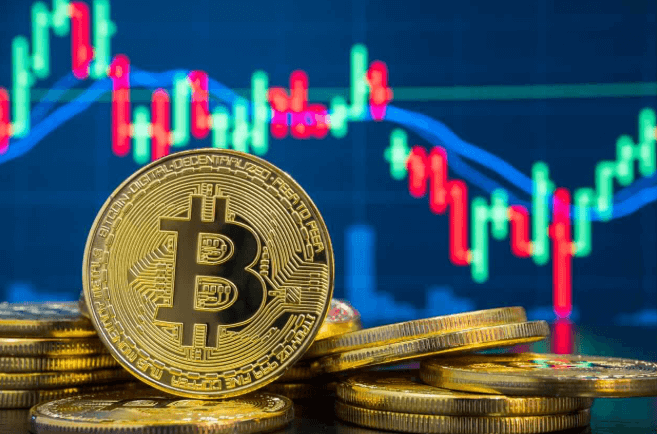In a major boost to cryptocurrency markets, Bitcoin and Ethereum have seen significant price increases following the release of the U.S. inflation data for March, which showed a decrease to 2.4%—the lowest inflation rate since the beginning of 2022. This drop in inflation has reignited optimism among investors, driving up the prices of leading digital assets.
Bitcoin, the world’s largest cryptocurrency by market capitalization, surged by over 10%, breaking through the $30,000 mark, while Ethereum followed suit, rising by 8% and crossing the $2,000 threshold once again. This positive movement reflects growing confidence in both digital and traditional markets as inflationary pressures ease and economic uncertainty appears to diminish.

The Impact of Lower Inflation on Crypto Assets
Inflation has long been a major concern for investors in both the traditional financial markets and the cryptocurrency space. High inflation erodes the purchasing power of fiat currencies, prompting investors to seek alternatives that can act as stores of value. Cryptocurrencies, especially Bitcoin and Ethereum, are often seen as a hedge against inflation due to their limited supply and decentralized nature.
The recent inflation data showed that the U.S. Consumer Price Index (CPI) increased by just 2.4% in March, marking a sharp slowdown from the previous year’s peak of 9.1%. This decrease is seen as a sign that inflationary pressures are subsiding, which has led to renewed interest in risk assets, including cryptocurrencies.
Bitcoin, often referred to as “digital gold,” has particularly benefited from this environment, as investors look for assets that can retain value in the face of inflation. Ethereum, with its smart contract capabilities and growing ecosystem, has also become a popular choice for investors looking to gain exposure to the broader crypto market.
Institutional Investment Driving Crypto Surge
The recent uptick in cryptocurrency prices is not only fueled by retail investors, but also by increasing institutional interest. Large institutional investors, including hedge funds, pension funds, and publicly traded companies, are increasingly allocating a portion of their portfolios to Bitcoin and Ethereum, viewing them as valuable assets in a diversified investment strategy.
BlackRock, one of the world’s largest asset management firms, recently announced that it would launch a Bitcoin exchange-traded fund (ETF), which is expected to attract even more institutional capital into the market. The growing acceptance of Bitcoin and Ethereum by traditional financial institutions is seen as a major milestone in the evolution of cryptocurrencies as legitimate financial assets.
Market Sentiment and Future Expectations
The broader market sentiment has shifted from caution to optimism, driven by the combination of falling inflation, lower interest rates, and increasing institutional involvement in the crypto space. Many analysts believe that the current price surge could be just the beginning of a broader bullish trend for cryptocurrencies, especially if inflation continues to decline and economic growth stabilizes.
“We are witnessing a fundamental shift in how investors view cryptocurrencies,” said Mark Yusko, founder of Morgan Creek Capital Management. “Bitcoin and Ethereum are no longer just speculative assets; they are becoming integral parts of diversified portfolios. The drop in inflation is a key catalyst for this change.”
While the price surge is undoubtedly positive for crypto investors, some experts caution that the market could still experience volatility in the near term. Rising interest rates, potential regulatory challenges, and macroeconomic uncertainty remain risks that could weigh on crypto prices. However, the recent price action suggests that many investors are confident in the long-term prospects of digital assets, even in the face of short-term fluctuations.
Looking Ahead
As the U.S. Federal Reserve continues to monitor inflation and adjusts its monetary policy, the outlook for cryptocurrencies will remain closely tied to broader economic trends. A continued decline in inflation, coupled with supportive monetary policies, could provide a tailwind for Bitcoin, Ethereum, and other digital assets in the coming months.
For now, crypto investors are celebrating the recent price gains, but they are also preparing for potential volatility. The crypto market is known for its rapid fluctuations, and while the recent surge is encouraging, many are keeping a close eye on inflation data and central bank policies for further guidance.
Conclusion
The recent drop in U.S. inflation to 2.4% has provided a significant boost to Bitcoin and Ethereum, with both cryptocurrencies experiencing notable price increases. As inflationary pressures ease and institutional interest in the space grows, the future looks promising for digital assets. However, market participants remain cautious, understanding that the crypto market’s volatility could lead to further fluctuations in the short term.
For now, the positive price movement of Bitcoin and Ethereum serves as a clear signal that cryptocurrencies are increasingly being seen as a valuable asset class in a low-inflation environment, with many investors expecting further gains in the coming months.
Disclaimer: This article is for informational purposes only and is not investment advice. Investors should research carefully before making any decisions. We are not responsible for your investment decisions.
















